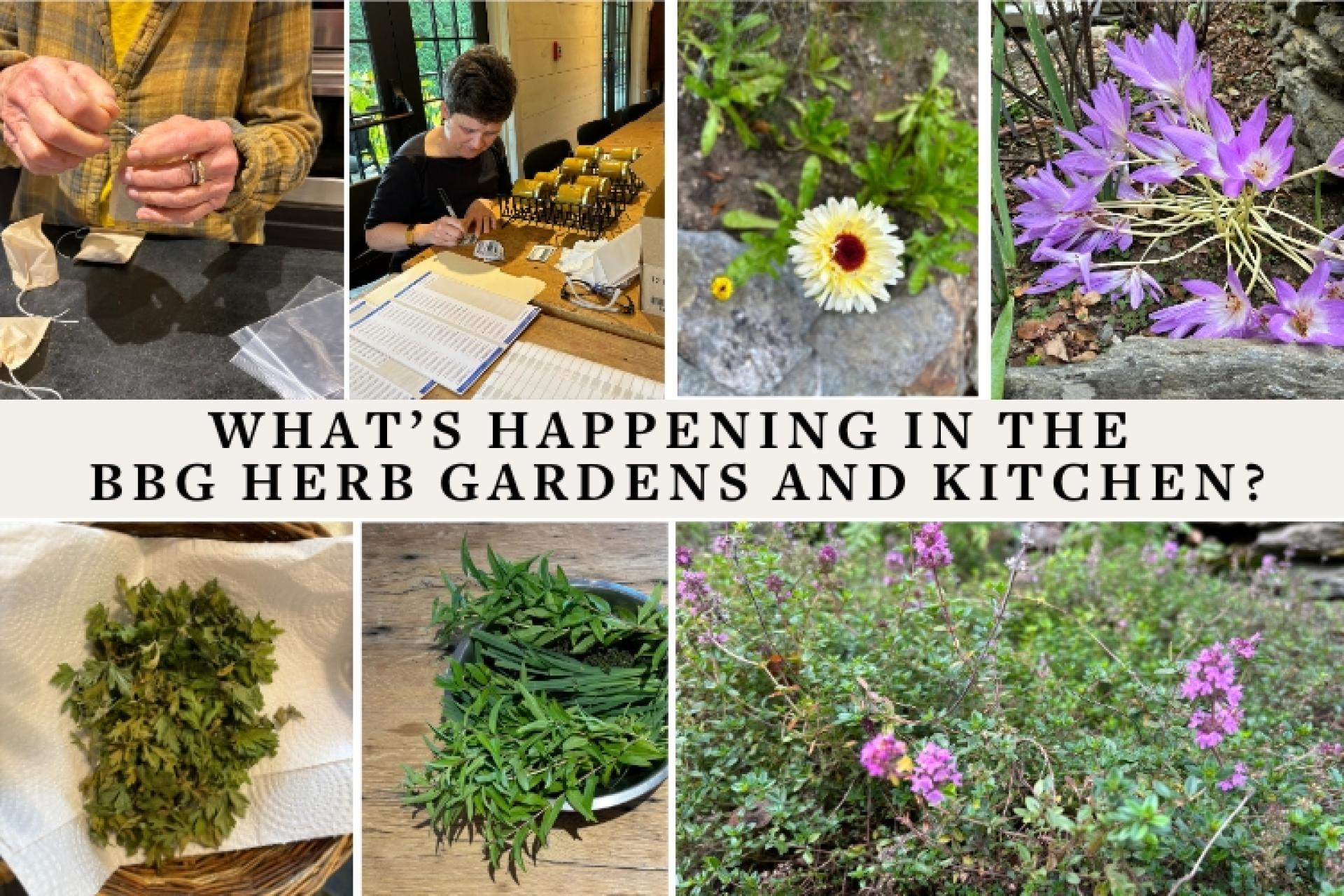You are here
What Is Happening in the BBG Herb Gardens and Kitchen This Week (Sept. 23)?
What Is Happening in the BBG Herb Gardens and Kitchen This Week (Sept. 23)?
By Barbara Smith
Colchicums (Colchicum autumnale) take center stage in the BBG Herb Display Garden this week (photo included). Also known as Autumn crocus, meadow saffron, or naked ladies, this showy, perennial herb prefers moist soil in sun or part shade to thrive. Grown from corms, the leaves emerge in Spring then go dormant; followed by showy flowers that seem to pop up overnight in late summer or fall. Many varieties have purple or pink flowers, although there are yellow or white varieties, too.
Since the Middle Ages, treatments derived from colchicums were used (in tiny doses) to deal with gout from the buildup of uric acid in the blood. Today, medicines made with colchicum extract have been approved by the FDA, because of their efficacy in this treatment. However, readers should be aware that all parts of the plant are poisonous.
The genus name comes from an ancient place “Colchis” said in Greek mythology to be the land where Jason and the Argonauts went on their quest for the Golden Fleece. According to lore, a flowering plant that grew there (Kolchikon) was used to make a potion to sedate the dragon that guarded the Fleece (!). As one garden writer more recently put it, “I appreciate how they (colchicums) look in my garden, so louche and romantic as they lie around in the grass after a heavy downpour, like partygoers the morning after a good all-nighter.” (Stephen Orr, The New American Herbal). Maybe next year, consider growing some of these interesting herbs? They should be planted in mid-to late summer to establish for fall blooming.
Another notable herb in the Display Garden, lemon thyme (Thymus citriodorus) (pictured), continues blooming with its diminutive purple blossoms. Thymes as a group have antimicrobial, antiseptic and antioxidant qualities. (Ancient Egyptians used thyme in their mummification process.) On a lighter point, lemon thyme can be appreciated in the kitchen for its piney-citrus flavor, a great addition to salad dressings or sprinkled on mozzarella cheese with olive oil and salt, for example.
Our last featured herb today is Salvia Amistad (pictured) also known as friendship sage. This bushy, upright perennial (or annual, depending on conditions) is a deer-resistant member of the mint family. It is a particularly floriferous variety featuring violet-purple flowers that hummingbirds and bees love.
With a parting glance at last week’s featured herb, Calendula, we’ve included another photograph with its flower wide open.
In the Center House, the Herb Associates Kitchen Crew were working at full speed. Jalapeno Jelly brought a new sharp fragrance to the kitchen, later mellowed a bit by a Lemon Verbena and Lemon Balm Jelly. Packets of Tulsi Tea (Holy Basil) and Spearmint Tea were prepared. Tulsi Tea helps to build energy and calm stress; Spearmint Tea promotes digestive health and also has relaxing effects. Fennel Tea packets were also prepared. The fragrances emanating from these dried herbs were delicious.
Still other Herb Associates mixed the classic blend of Herbes de Provence and assembled Lavender Sachets and packets of Pat’s Room Freshener (so named for an herbalist from Pittsfield).
A new product developed this season is Poultry Seasoning, useful as a rub or in bread stuffing. How nice to try a new variation on the theme this Thanksgiving season.
Finally, more product labeling was accomplished (pictured). A new supply of the ever-popular Herb Mustard is now available, along with Peach Basil Shrub.
You can find these mentioned Herb Associates products and many more — at the Visitor Center’s Gift Shop —or at the upcoming Harvest Festival. Stop by our table, we’ll be in front of the Center House!
Help Our Garden Grow!
Your donation helps us to educate and inspire visitors of all ages on the art and science of gardening and the preservation of our environment.
All Donations are 100 percent tax deductible.


